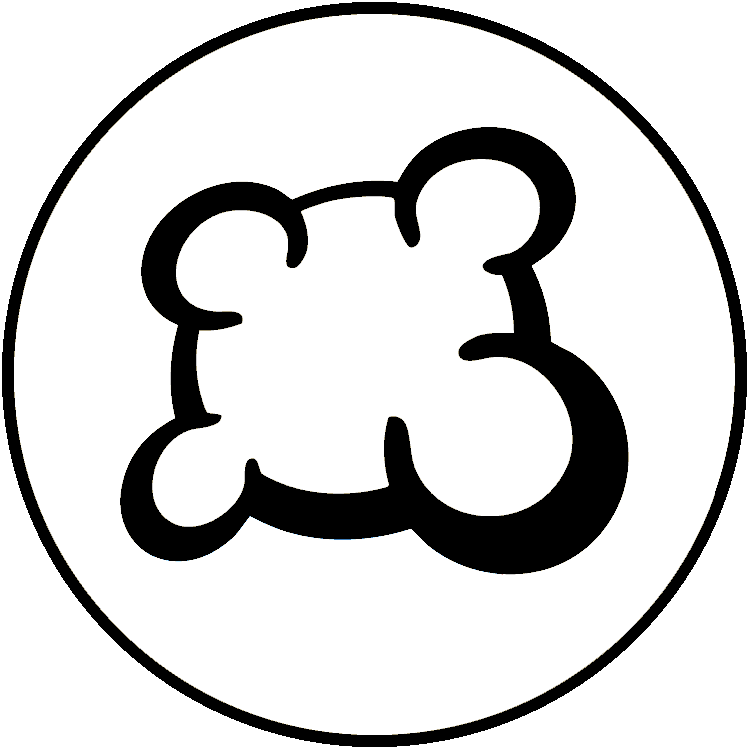Plant flowers in your rainforest to grow trees and attract animals. After 9 rounds, the player with the most points wins.
Setup
Your rainforest is a 6x6 grid. There are many possible layouts, but all players use the exact same layout.
In the "Advanced" and "Scenario" setting, there are also 5 ecosystem cards, which give additional ways to score. The ecosystem cards are public and all players play with the same ecosystem cards.
The supply consists of 3 animals in each of the 5 colors. In a 2p game, there are only 2 animals per color.
One player is randomly assigned the starting player. They have the Pangolin token.
See #Options and details for more information about the game options and how they affect setup.
Overview
Your rainforest is a 6x6 grid, divided into areas of 2-5 squares. Each area shows two point values: area score (smaller one) and animal score (larger one). Some squares are lakes; they are not part of any area and they are treated as if nonexistent on your board.
You will grow flowers and trees, and attract animals into your rainforest. Your primary goal is to have "complete areas": areas where every square has a flower, and all the flowers are of the same color. Complete areas are worth positive amount of its area score. Be careful, if you start an area but you do not complete it ("unfinished area"), or if you have flowers of different colors in an area ("mixed area"), those areas are worth negative amount of its area score.
By placing a flower on top of another flower of the same color, you can build trees, which are worth a flat amount of points by themselves. A complete area with all trees on the square becomes a "perfect habitat": the last tree placed becomes an animal, which is worth the area's animal score, and you get to put flowers on squares adjacent to the animal.
Ecosystem cards additionally provide alternative ways to score points. If you play with them, look to make use of them.
Each round
Each round, there are 3/5/7 cards available in a 2/3/4-player game. Each player will take two turns each round. (Solo game is different, see #Solo game.)
On your turn, choose an available card and place all the flowers corresponding to the card, explained below.
- • After the first player takes their first turn, they place the Pangolin token among the available cards.
- • The Pangolin token can be taken by any player just like a card. The Pangolin token acts like a card with a multicolored flower; additionally, they will be the starting player for the next round.
Placing flowers
- • You must place all flowers depicted on your card. A multicolored flower means a flower of any color of your choice.
- • Each flower goes to one space of your rainforest.
- • All flowers placed this turn must be connected to each other side by side. (Diagonals are not connected.)
- • All flowers placed so far must also form a single connected forest.
- • Flowers may not go on lake (water) spaces.
- • Flowers may be put on top of other flowers of the same color.
- • Flowers may not be put on top of trees or animals.
If it is impossible to place flowers as stated, it is illegal to choose that card. In case it is impossible to choose any card at all, choose and discard any card without placing any flowers.
As described in the overview, your rainforest is divided into areas. It is legal to place flowers of any combination of colors in an area, but ultimately you want an area to have flowers of the same color if you want to score positive points from it.
Growing trees
After you finish placing flowers, you check for tree growth. A flower placed on top of another flower becomes a tree.
If at the end of your turn, an area is a "perfect habitat" — meaning it has flowers all of the same color, and all of them have trees — then you may attract an animal.
- • Choose any tree in that area that you placed this turn. That tree is replaced by an animal.
- • Afterward, on every square that is adjacent to it (sharing a side, not just diagonally), you may place a flower of any color. You may place flowers of any combination of colors, and the flowers may be used to grow trees. You do not have to place a flower, you decide for each square whether you want to place a flower and of what color.
- • You may only place one animal per turn, even if you complete multiple perfect habitats in the same turn.
- • Note that the supply of animals is limited. As mentioned in the setup, there are 3 animals per color (2 animals per color in a 2p game).
End of game
The game ends after 9 rounds.
Every area has two point values: one for the area itself, and one for the animal in it.
- • Every "complete area" (all spaces filled with flowers of the same color) is worth plus the area's points.
- • Every "unfinished area" (has empty space) is worth minus the area's points.
- • Every "mixed area" (has flowers of multiple colors) is worth minus the area's points.
- • Areas that are completely empty are worth nothing, neither positive nor negative.
- • Every animal is worth the area's animal points.
- • Every tree is worth +2 points.
If playing with ecosystem cards, every ecosystem card also awards points. See the rules for the ecosystem card.
The player with the most points wins.
Solo game
Play with 3 animals per color. Do not use the Pangolin token.
The game lasts for 18 rounds. Each round you only take 1 turn: reveal 3 cards, choose 1 to play, and discard the other 2.
Details and options
Your rainforest is made of four 3x3 boards. Each board is double-sided, and they can be rotated in one of four orientations.
- • In the "First game" option, the layout matches the suggested first game setup. Note that this layout has no 5-square areas.
- • In the "Scenario" option, the layout matches the chosen scenario (rulebook p.9).
- • In the other options ("Base" and "Advanced"), the layout is randomized.
There are 24 ecosystem cards. If you use ecosystem cards, 5 are in play. They are fixed throughout the game and everyone will use the same cards.
- • In the "Scenario" option, the ecosystem cards match the chosen scenario (rulebook p.9).
- • In the "Advanced" option, the ecosystem cards are chosen at random.
- • In the other options ("First game" and "Base"), the ecosystem cards are not used.
There are 70 flower cards. Used cards are discarded from play and are not used again. The breakdown of flower cards is as follows:
| Card type | Possible variants | Copies of each variant | Total cards |
|---|---|---|---|
| 1 multicolored flower | 1 | 5 | 5 |
| 2 flowers of the same color | 5 | 3 | 15 |
| 2 flowers of different colors | 10 | 3 | 30 |
| 3 flowers of different colors | 10 | 2 | 20 |
The number of cards seen in each game is 54/27/45/63 for a 1/2/3/4-player game.

